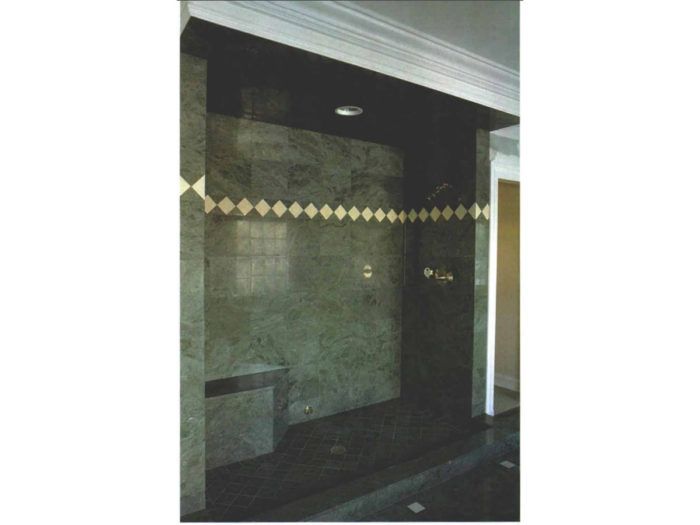Tiling a Shower With Marble
Take the time to get your tiles tight and flat, and your shower will look as if it had been carved out of solid marble.

Synopsis: A primer on using marble to tile a shower, a more challenging job than using perfectly uniform ceramic tile. The author discusses the unique characteristics of this material and offers tips on how it should be handled.
Back a few hundred million years or so, Earth was working overtime. Incredible forces and pressures within the planet moved continents and created mountains. Limestone, formed from the skeletons and shells of countless sea creatures, underwent an intense and miraculous transformation during this period. The result of this metamorphosis is marble, which has become a prized building material.
While marble was being formed, various minerals and contaminants were introduced, producing the veins and rich colors that make each batch of marble unique. However, all of these wonderful colors make installing marble an interesting challenge. In 25 years as a tile installer, I have learned the importance of opening every box of marble and shuffling the tiles to get the veins and colors to work together before a project begins. My goal is to blend the tiles in such a way that the finished shower wall resembles a solid slab of marble.
The project in this article is a 7-ft, by 3-1/2 ft. shower stall with a built-in seat and a shampoo shelf. The shower-door enclosure runs the full 7 ft. along the front of the shower bay with 1-ft. returns on both ends. This arrangement shows off the entire expanse of marble. For this particular shower, my clients chose green marble, which needs special treatment because of its chemical makeup. Green marble tile reacts negatively to water-based or acrylic thinset cement, causing the tile to warp and break down. I avoid these problems by sealing the back of each tile with epoxy before it is installed, which I will describe in detail later on.
Backerboard must be kept off the floor
Marble tiles for any shower should be mounted on cement backerboard. For this project I used Durock, which consists of a thin layer of cement sandwiched between two layers of fiberglass mesh.
Even though backerboard is not supposed to deteriorate or fall apart, it is a porous material and must be kept off the bottom of the shower floor to prevent moisture from wicking up the wall. If the backerboard gets wet, it can stain the marble tile from behind. I keep the nails in my backerboard above the top of the shower pan or at least 5 in. from the floor to prevent the shower pan from leaking. Installing the backerboard too low and nailing through the shower pan are probably the two most frequent causes of failure with a marble-tile installation in a shower.
For more photos and details, click the View PDF button below:
Fine Homebuilding Recommended Products
Fine Homebuilding receives a commission for items purchased through links on this site, including Amazon Associates and other affiliate advertising programs.

Plate Level

100-ft. Tape Measure

Original Speed Square


























